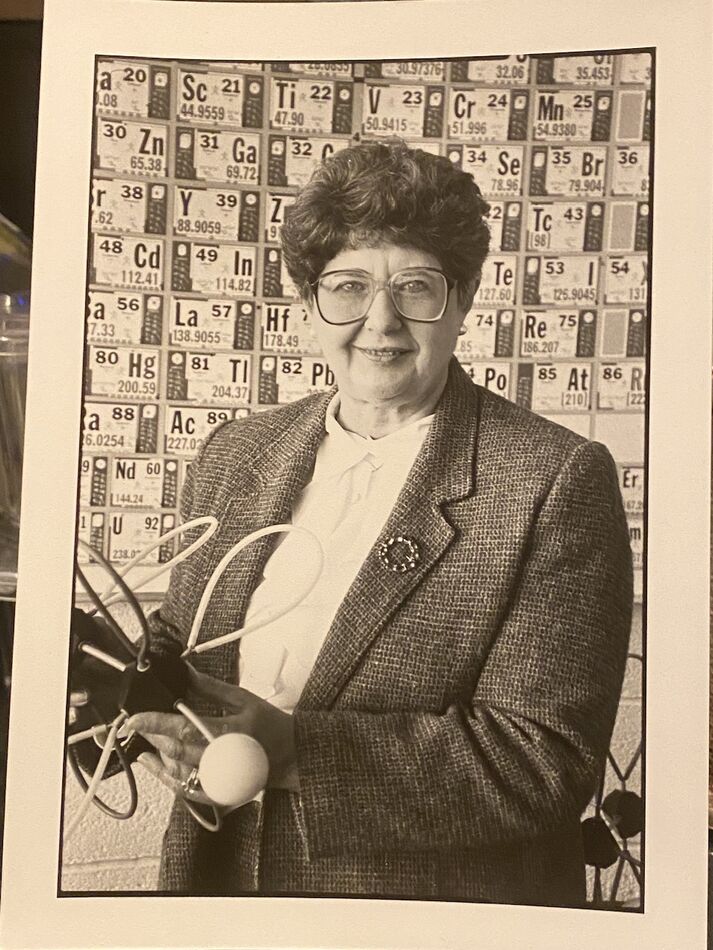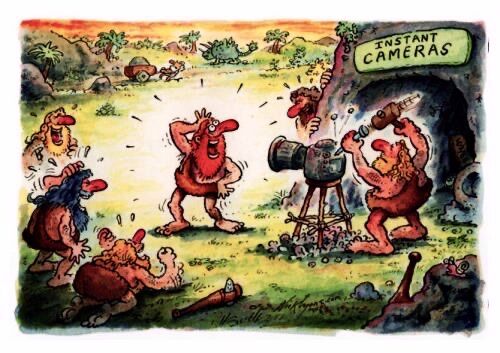Bryan Peterson vs. Diffraction
Dec 11, 2023 11:58:56 #
tcthome wrote:
As I'm reading this & Dirtfarmer's reply above, I'm thinking, most of the time you would need to be PIXEL PEEPING in order to see it. Maybe really large prints & macro photos.
You're right in thinking "most of the time". That level of scrutiny can be justified sometimes, but like many other factors which influence IQ it can be overdone. It's important to keep things in perspective. Thinking of it as an absolute or ubiquitous requirement would be a mistake.
Dec 11, 2023 12:16:49 #
Dec 11, 2023 13:50:06 #
lamiaceae wrote:
Amazing the effects of quantum mechanics on photog... (show quote)
The effects of Quantum Mechanics on photography. This is a topic that you should elaborate upon.
Dec 11, 2023 14:03:59 #
Dec 11, 2023 14:18:12 #
flyboy61 wrote:

You'll have to use Quote Reply to let us know who you are giving thumbs up to.
Dec 11, 2023 14:51:49 #
JohnSwanda wrote:
You'll have to use Quote Reply to let us know who you are giving thumbs up to.
It was me, clearly.
Dec 11, 2023 14:57:46 #
srg wrote:
The effects of Quantum Mechanics on photography. This is a topic that you should elaborate upon.
Aha!! I think we inadvertently have the answer. The significance of diffraction depends on how closely we observe it.

Dec 11, 2023 14:58:42 #
srg wrote:
The effects of Quantum Mechanics on photography. This is a topic that you should elaborate upon.
Diffraction was discovered and quantified long before quantum mechanics.
Dec 11, 2023 15:03:03 #
petrochemist wrote:
That would depend on the film camera. Normal 35mm SLRs/rangefinders would be FF, but some would be half frame (getting twice as many shots on a roll)
My auto 110 camera (a 110 film SLR) has a similar sensor size to MFT (2x crop)
my 5x4 monorails have a crop of about x0.43
I have other film cameras with something like 7 other crop factors within this range & I know of others taking the range further out.
My auto 110 camera (a 110 film SLR) has a similar sensor size to MFT (2x crop)
my 5x4 monorails have a crop of about x0.43
I have other film cameras with something like 7 other crop factors within this range & I know of others taking the range further out.
Dec 11, 2023 15:09:01 #
R.G. wrote:
Aha!! I think we inadvertently have the answer. The significance of diffraction depends on how closely we observe it. 

Does that mean it can change while were not looking ? Kinda like the 3 weeks old leftovers in the fridge when the light is off ? Seems like almost anything with cheeze on it is especially vulnerable to looking kinda fuzzy at the edges.
Dec 11, 2023 15:14:13 #
Person 1 - I want really sharp details, that's why I use small apertures.
Person 2 - Do you look at the pixel-level details of your images?
P1 - No.
P2 - That's what I figured.
Person 2 - Do you look at the pixel-level details of your images?
P1 - No.
P2 - That's what I figured.
Dec 11, 2023 15:14:35 #
User ID wrote:
Does that mean it can change while were not looking ? Kinda like the 3 weeks old leftovers in the fridge when the light is off ? Seems like almost anything with cheeze on it is especially vulnerable to fuzzy green diffraction.
Yes, it can change while we're not looking, but the outcome is indeterminate until we start fretting about it. It's all about the observer
 .
.Dec 11, 2023 15:21:34 #
Rab-Eye wrote:
I'm revisiting Bryan Peterson's classic Understanding Exposure, and it reminded me how often he shoots at f/11-22. I obviously can't ask him why diffraction does not seem to be a problem for him, so I am asking here. Is diffraction at small apertures overblown as an issue? Is it more of a problem under certain conditions and less so under other conditions? A confused mind wants clarification.
Thanks,
Ben
Thanks,
Ben
To both questions, in a word: Yes.
Everyone seems familiar with the concept of using pinholes as lenses for forming images. The smaller the pinhole the sharper the image you get, but the dimmer it is. The relative distance from the hole to the image plane affects things, too. A hole an inch in diameter is certainly a lot bigger than the point on a pin or needle, but it works to cast an image, by the same principle of diffraction, if it is about 30 feet away. We saw this in my high school physics classroom.
So imagine putting a pinhole lens in roughly the middle of a glass lens. This is what you approach as you stop down the diaphragm in your lens. It is going to bend the light going through it, but maybe not as much as the glass elements around it. Ideally the diaphragm is built in the optical center of the lens so whatever image cast by the very small diaphragm opening aligns exactly with the image created by the glass of the lens. This kind of perfection almost never happens, so you end up with essentially two images, slightly out of register, and confusing the sharpness.
With the lens open to the widest aperture, the image produced by the glass is all you see. It still predominates as you stop down. Any 'pinhole effect" from a medium aperture would be observed as an out-of -focus image but so blurred and indistinct that it just slightly affects contrast. Keep going toward smaller openings and eventually you get to a point where you get enough of a 'contribution" from the small aperture that you lose some quality. When using pairs of finely spaced lines as a target this can cause those images to blur. and appear to be a single dark spot.
So, diffraction can be seen on test shots, and is a real thing. But most photographs are of 3-dimensional objects, and the softening effect is not objectionable. It is often slight, and at times an artistic benefit.
You definitely get increased depth of field with smaller apertures. Often this is much more important than any slight loss of resolution.
A really good lens which has its optical limits defined by the scattered wavelengths of diffraction of light is still going to be a really good lens. It probably would get noticeable at f/45, or f/64, but probably isn't even built to stop down that far. So use your sense in good health, and don't worry about diffraction limits outside a discussion of trivia.
Dec 11, 2023 17:48:29 #
burkphoto wrote:
It depends on the context... my favorite answer fo... (show quote)
As usual, I agree with you on all that. The subject matters, too--I like smaller apertures for general scenes, but my key factor is: Is it more important that one plane of focus be razor sharp, or the whole scene? In landscape views people tend to want the whole thing to be in focus, while the edge-sharpness of this or that is less critical--and fine detail in the distance is also less critical.
Also, classical old-time portraits had to use larger apertures because a lot of light was required for photos--not because they wanted to soften the focus; but if you want to soften the focus in a portrait or other picture, the larger apertures can do that while softening the rest.
I think many people over-do the large-aperture-for-background-blur bit, but that is certainly always an option
Dec 11, 2023 18:17:43 #
R.G. wrote:
Yes, it can change while we're not looking, but the outcome is indeterminate until we start fretting about it. It's all about the observer  .
.
 .
.
If you want to reply, then register here. Registration is free and your account is created instantly, so you can post right away.





